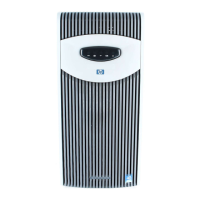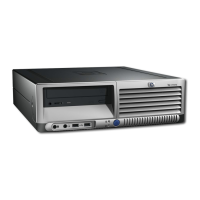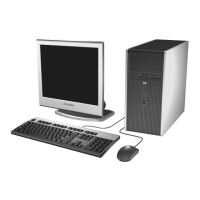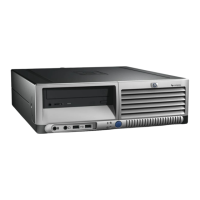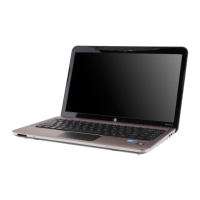Removal and replacement procedures 60
current DIMM technology. If the maximum DIMM technology allows for creating 2-GB single-rank DIMMs,
a dual-rank DIMM using the same technology would be 4-GB.
Advanced ECC memory
Advanced ECC is the default memory protection mode for this server. In Advanced ECC, the server is
protected against correctable memory errors. The server will provide notification if the level of correctable
errors exceeds a predefined threshold rate. The server does not fail because of correctable memory
errors.
Advanced ECC provides additional protection over Standard ECC in that it is possible to correct certain
memory errors that would otherwise be uncorrectable and result in a server failure. Whereas Standard
ECC can correct single-bit memory errors, Advanced ECC can correct single-bit memory errors and multi-
bit memory errors if all failed bits are on the same DRAM device on the DIMM.
The following guidelines apply to Advanced ECC memory:
• All general memory requirements apply.
• Advanced ECC mode is supported with one to four memory boards.
• Board insertions do not convert the AMP mode while the server is running. A server cannot be
converted from Advanced ECC to another AMP mode by inserting a board while the server is
running. Board insertions in Advanced ECC are solely for making additional memory resources
available to the operating system.
• Advanced ECC is the only mode in which hot-add operations are supported, and is the only mode in
which the amount of memory available to the operating system can be increased without a reboot.
• If a memory board (which contains DIMMs) is unlocked while in Advanced ECC mode, audio alarms
and visual alerts occur.
The following rules apply to hot-add operations. Hot-add is performed by adding a memory board while
the server is running, and the additional memory is made available to the operating system without a
reboot.
• Boards must be inserted sequentially.
• Multiple hot-add board insertions can be performed one at a time on the same server. For example,
if a server has three empty memory board slots, three hot-add board insertions can be performed.
• If multiple hot-add operations are performed, allow one board insertion operation to complete (as
indicated by the memory board LEDs ("Memory board components and LEDs" on page 79) and
operating system logs) before inserting another memory board.
CAUTION: When the memory board locking switch is unlocked in a mode that does not
support hot-add or hot-replace capabilities, audio alarms and visual alerts occur. Removing the
memory board at this point causes server failure.
To end the audio alarms and visual alerts, move the memory board locking switch back to the
locked position. This action does not result in data corruption or server failure.
If removal of a single memory board is required and it is the only memory board, power down
the server and make the necessary memory changes.

